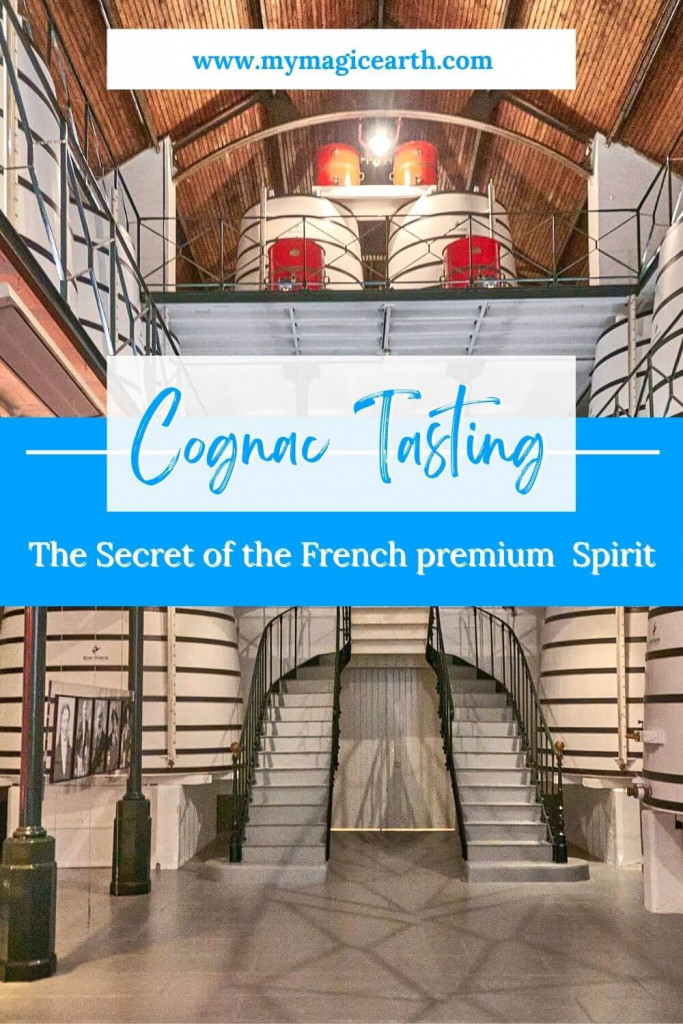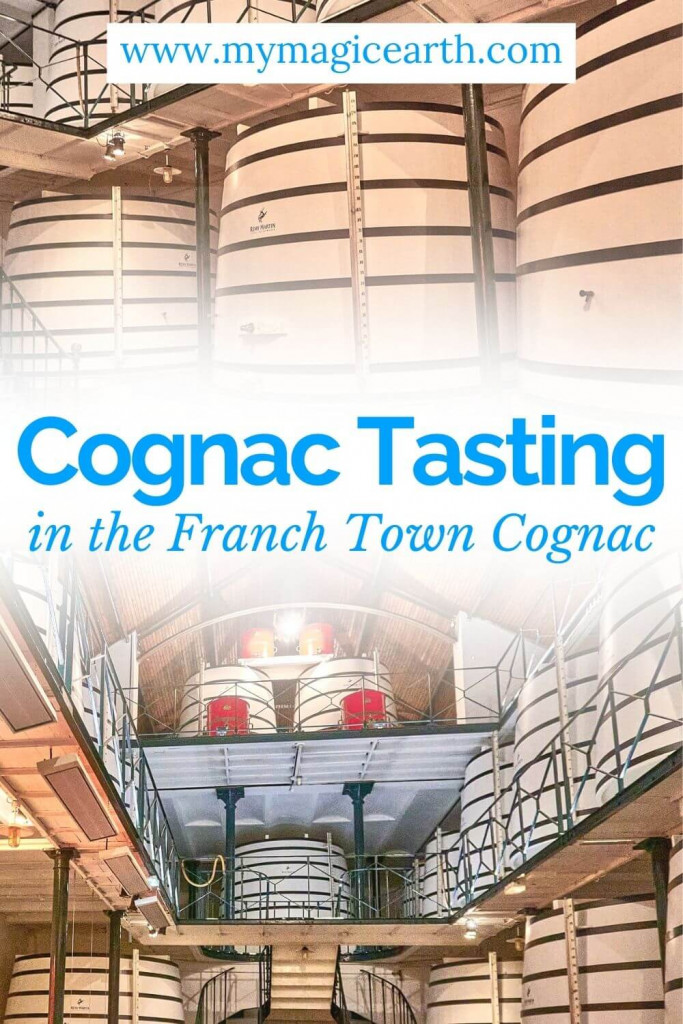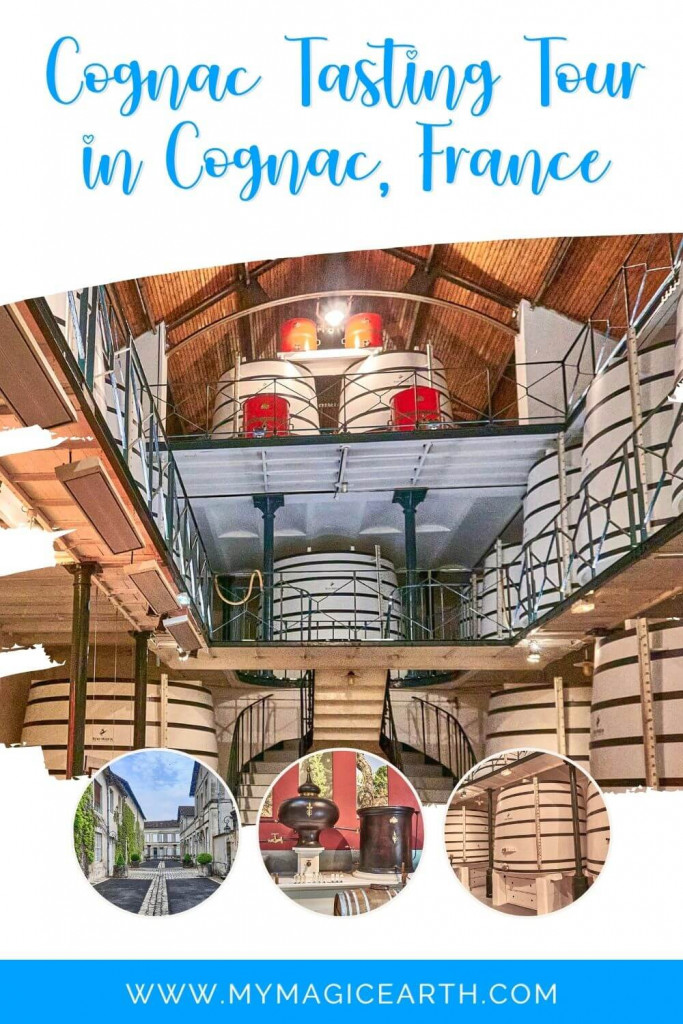During the Easter holiday in the Charente-Maritime department of France, we went to the town of Cognac, where we eagerly joined a Cognac Tasting tour. Cognac isn’t just renowned for its spirit; it’s also the very birthplace of this distinguished beverage. Our plan included exploring the charming town and visiting the historic house of Rémy Martin before the tour. However, to our disappointment, the house was undergoing renovations in preparation for its upcoming 300th-anniversary celebration.
We entered the adjacent store hosting the cognac tasting tour, the sole English tour offered for the week during the off-season. With uncertainty about which brand or product to choose, the tour provided us with insights into the secrets of this premium spirit. After the tour, we joyfully proceeded to purchase some of the coveted cognac, staying true to our original plan.
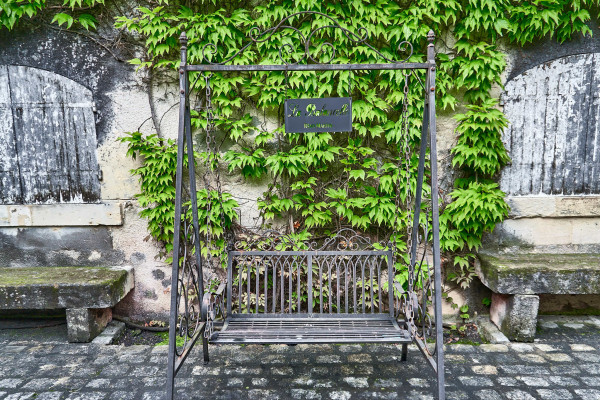
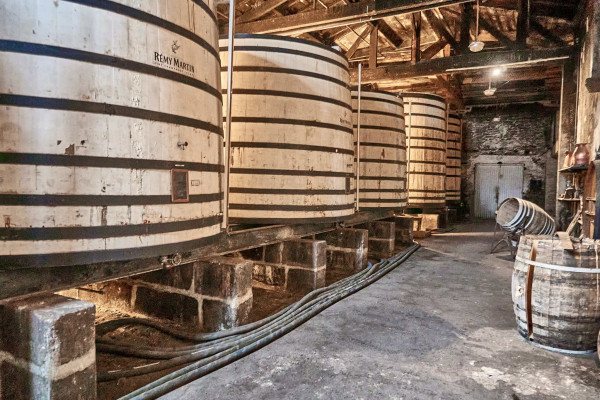
History of Rémy Martin
Our guide, a young French lady fluent in English, took us on an engaging journey through the history of cognac. The very name Rémy Martin pays homage to the company’s founder, with his grandson, also named Rémy, playing a pivotal role in crafting the iconic logo that would soon make the spirit renowned across the globe. In China, Rémy Martin is known as réntóumă (人头马), meaning a man-headed horse. This translation perfectly captures the essence of the logo, which combines a creature from Greek mythology—featuring the upper body of a human and the lower body and legs of a horse—with the zodiac sign associated with Rémy Martin. It’s fascinating to see how closely the Chinese translation aligns with the visual representation of the logo.
Cognac production
Producing cognac is a meticulous process, where every step plays a vital role in shaping its unique character. From the timing of grape harvests to the duration of fermentation, the specific distillation methods used, and the application of state-of-the-art blending techniques—each element contributes to the final product’s distinct qualities. Along this careful process, more than 70 parameters come into play, influencing the nuanced taste and guaranteeing the premium quality that defines cognac. It’s a remarkable blend of artistry and precision.
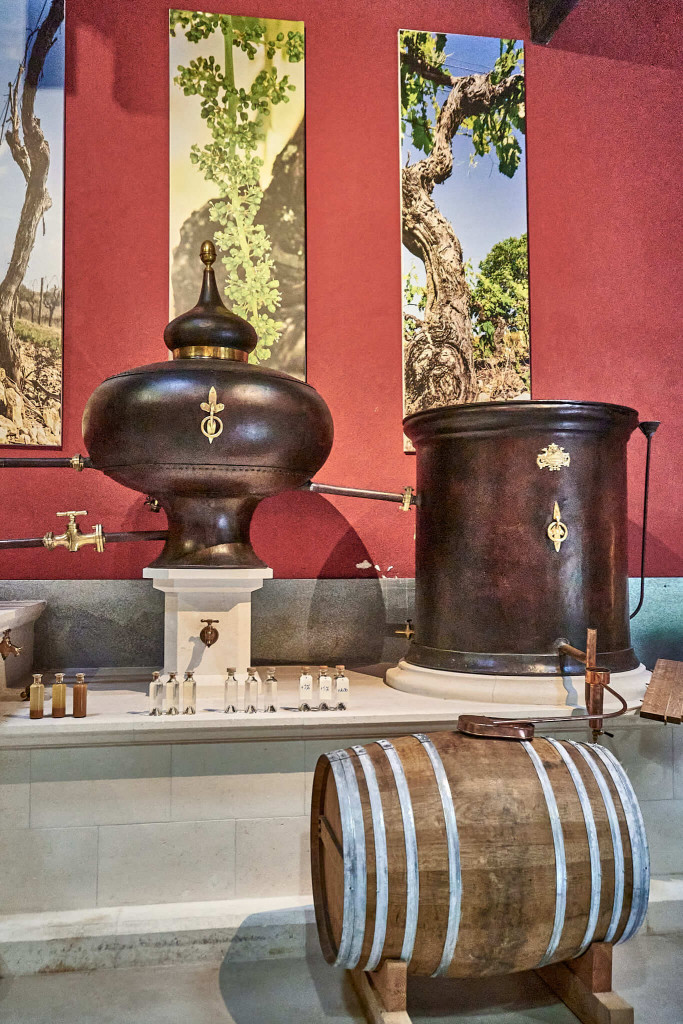
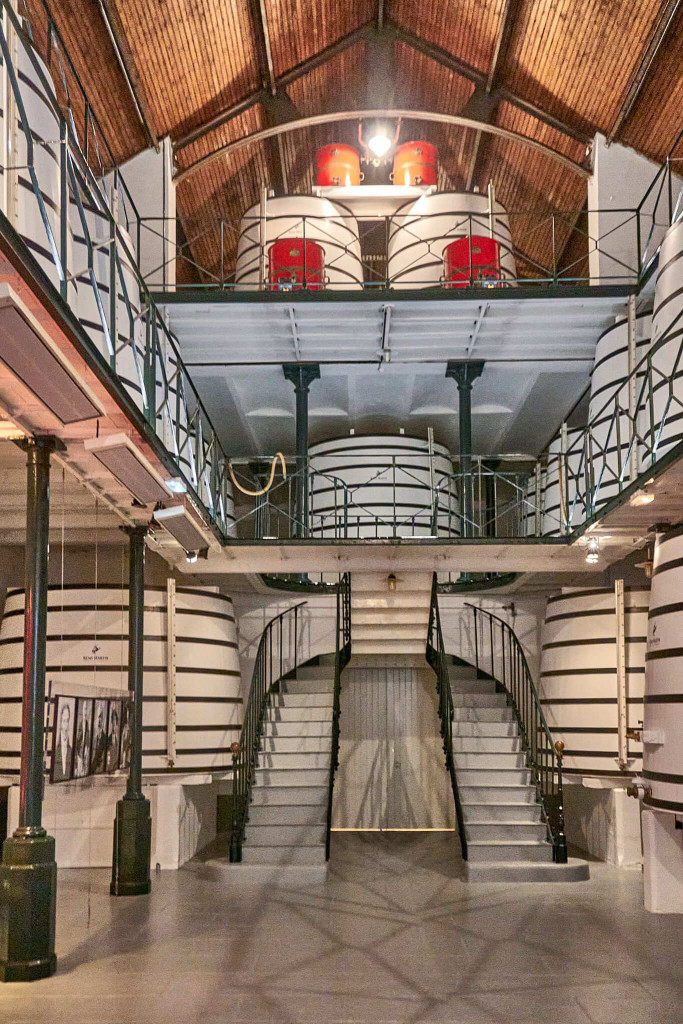
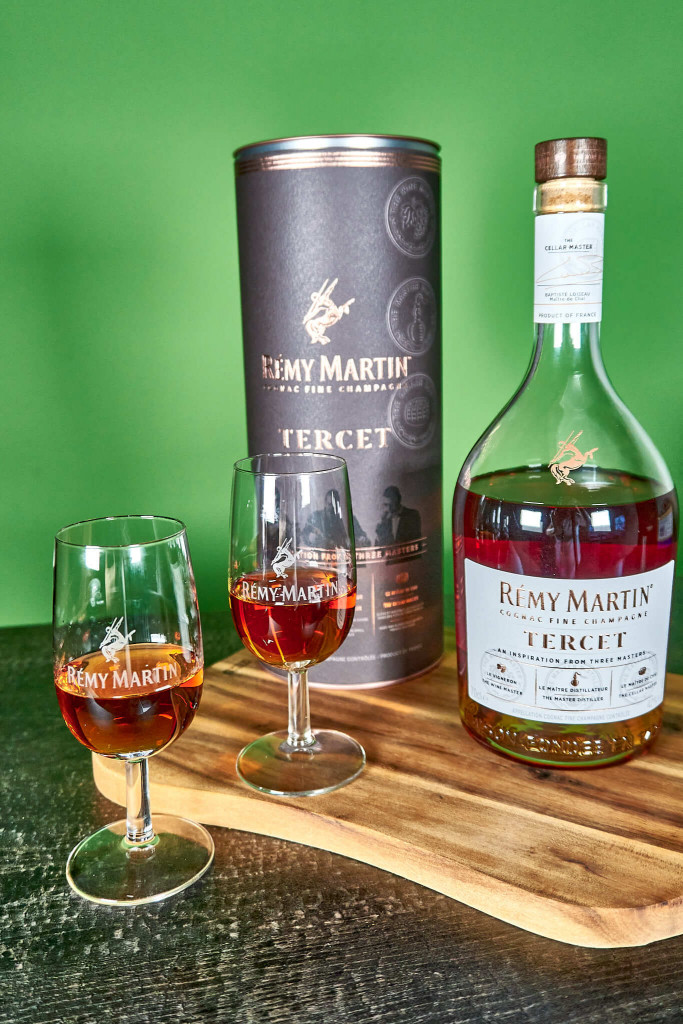
Grapes
In crafting cognac, only grape varieties sourced from the Grande Champagne and Petite Champagne regions are chosen. These areas provide the essential conditions for cultivating the finest grapes, with chalky soil and a microclimate subtly shaped by the nearby ocean. Notably, the depth of the chalk layer varies between the Grande Champagne and Petite Champagne regions, and this distinction is vividly illustrated in the introductory room, where sample chalk layers offer a glimpse into the unique terroir of each.
Fermentation
After pressing the grapes, yeasts are added to the juice. This process, without the addition of any other elements, converts the fruit sugars into alcohol. The outcome of this fermentation process is a white wine with about 7 to 8% alcohol content and a refreshing touch of acidity.
Distillation
Cognac distillation is a two-stage process. Our eyes were fixed on the classical Charentais copper pot, adorned with its swan’s neck, cooler, and condensing coil. Witnessing the wine transform into vapour and then gracefully condense back into the liquid form, known as “eaux-de-vie,” was like observing the alchemy of craftsmanship.
Following the initial distillation, only the initial and final portions of the eaux-de-vie undergo the second distillation process. This meticulous selection ensures that the resulting eaux-de-vie, a colourless spirit boasting about 70% alcohol, captures the essence of finesse and character.
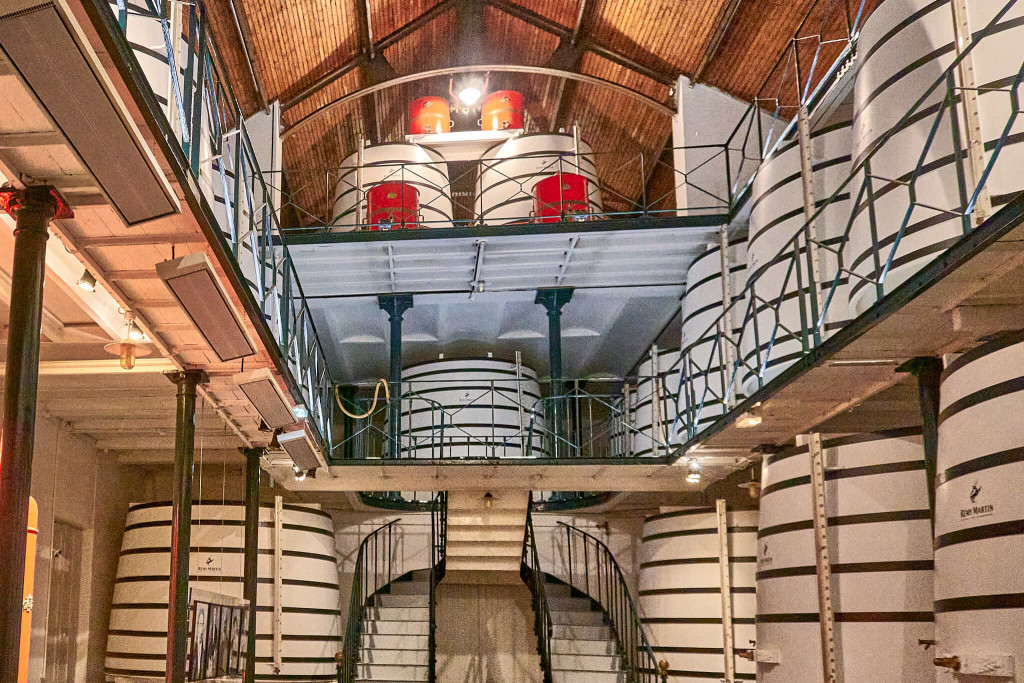
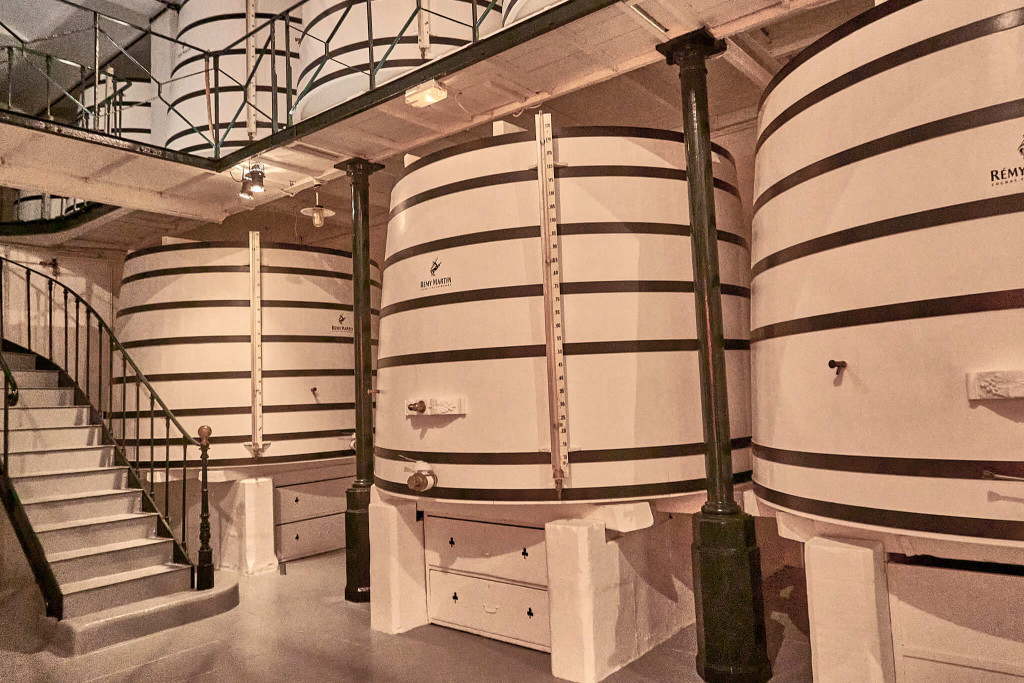
Aging
Entering the vast cellar, where numerous oak casks lay in anticipation, we found ourselves in an atmosphere saturated with the enticing scent of cognac. A reminder: photography was off-limits here due to the high alcohol content in the air. As we observed the harmonious interaction between cognac and oak, it became apparent that approximately 3% of the spirit gracefully evaporates each year. The distinctiveness of each barrel, marked by handwritten liquid volumes, contributed to the cellar’s charm.
Blending
Cognac, a harmonious blend of various ages of eaux-de-vie, is crafted with careful precision by the blender, also known as the cellar master. At Rémy Martin, it’s a journey of at least seven years of hands-on experience to master this art. The cellar master skillfully combines different eaux-de-vie, ensuring that each product, like the X.O version, maintains consistent aromas and flavors throughout the years. This exacting procedure, akin to the skill of a Master Nose in a perfume factory, entails the artful blending of eaux-de-vie sourced from varied vineyards.
Over time, the blending unfolds through a gradual transfer of eaux-de-vie from cask to cask, resulting in a meticulous combination. Reflecting on this process, I pondered whether modern technology could replicate it, only to realize that the entire production process ensures the wine spirit remains consistently at its premium level.
Tasting
In the tasting room, tables awaited our exploration of the cognac flavors. Our French guide delighted us with an introduction to a cocktail crafted from X.O cognac – a brilliant twist on enjoying this exceptional spirit.
Now, onto the highlight of the tour – the Rémy Martin VSOP tasting. Following the guide’s instructions, I delicately swirled the glass, noting the clarity of the cognac. Raising the glass to my nose, I attempted to discern the subtle floral notes as guided. Finally, savoring the cognac, I felt its rich flavors tantalize my taste buds. To enhance the experience and complement the ripe fruit and subtle notes of the cognac, I indulged in bites of pure black chocolates with their rich and bitter undertones, served on a small plate.
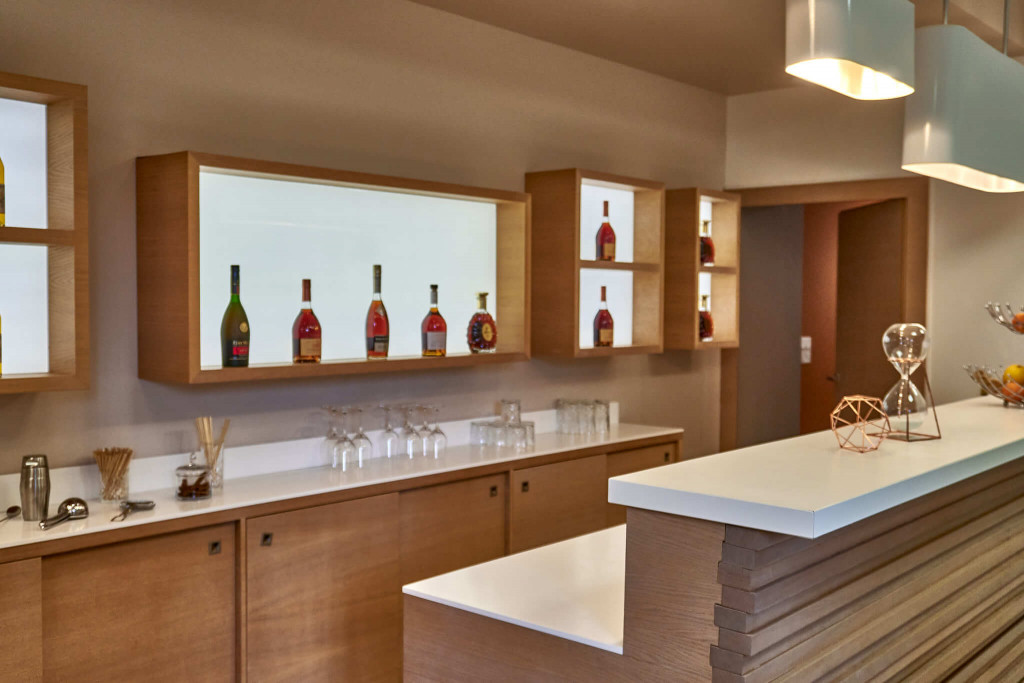
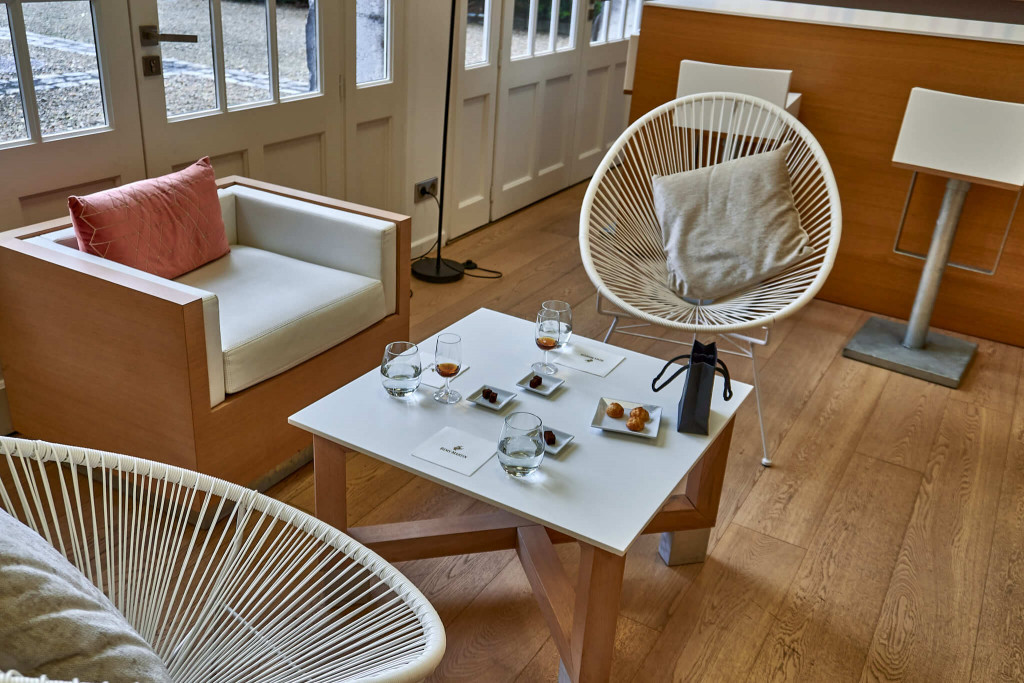
What we bought after the Cognac Tasting Tour
Our guide introduced us the Rémy Martin Club, an exclusive brand catering specifically to the Asian market. With distinct notes of toasted almonds and delightful flavors like dried fig and apricot, it proved to be an ideal companion for savoury dishes.
Enthralled by its exclusivity, we decided to bring home the Rémy Martin Tercet and the unique Rémy Martin Club. Of course, we couldn’t resist adding the premium X.O version to our collection. The shop exclusively offers pure cognac products, including a selection of limited editions.
Tips for Cognac Tasting Tour
I highly recommend booking your tour online to secure your spot and ensure an English-speaking guide accompanies you.
Given the alcohol restrictions in France, it’s important to note that driving after indulging in several cognacs isn’t permitted. To fully embrace the scenic charm of Cognac and explore its scenic sites, consider staying overnight or for a couple of nights in the town.
Optimal choices for accommodations within the town centre, and conveniently close to the Remy Martin house, include Hôtel Chais Monnet & Spa and Château Pellisson. Their central locations make them easily accessible on foot, adding to the overall convenience of your stay.
